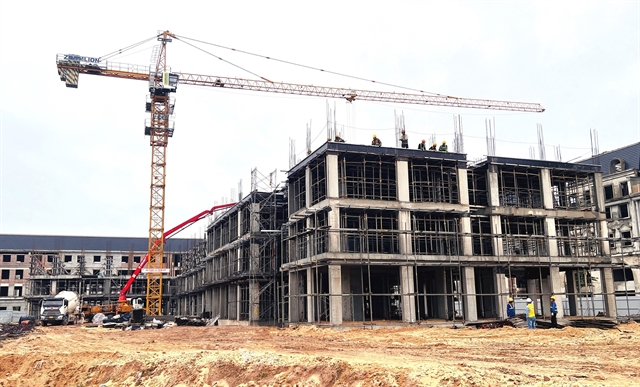 Economy
Economy

 |
| Farmers during rice planting season in the Mekong Delta province of Đồng Tháp. VNA/VNS Photo Nguyễn Văn Trí |
HÀ NỘI Greater demand in the international market has resulted in higher rice prices in the domestic market in recent months, according to Minister of Agriculture and Rural Development Lê Minh Hoan.
Data from the Vietnam Food Association (VFA) shows the export price of Việt Nam's 5 per cent broken rice reached a new milestone of US$638 per tonne on August 11, and $618 per tonne for 25 per cent, an increase of $105 per tonne compared to the previous month. In July 2023, the global market prices reached their highest level in the last one and a half decades.
Consequently, average prices in the domestic market for paddy rice increased by 16.3 per cent in August compared to the previous month, reaching VND7,786 per kilo. Average prices for stored rice have increased by 12 per cent, reaching VND9,417 per kilo.
Among these, premium white rice saw the most significant increase of 29.4 per cent, reaching VND14,925; 5 per cent broken rice saw a 26.7 per cent increase, reaching VND14,633 per kilo; 15 per cent and 25 per cent broken rice saw a 27 per cent increase, reaching VND14,033 per kilo.
There are instances in which traders had to compete in price bidding to purchase young rice from farmers in the Mekong Delta, the country's largest rice-producing region, driving prices even higher. Some rice export companies have reported a nearly 50 per cent increase in input cost for certain varieties from just one month before.
Sharp increases have forced rice factories to reduce capacity due to difficulties in sourcing input and extending delivery time for customers.
According to the minister, his ministry has submitted a report to the Prime Minister's Office regarding recent price hikes as well as a number of export bans on rice issued by some governments in major rice-producing regions around the world.
He expressed concerns and stressed the importance of avoiding a price shock as it will affect some of the most vulnerable social groups in Việt Nam. However, the country's rice export industry must also be taken into consideration before any measures can be taken to curb export.
He said farmers in the Mekong Delta are still in the rice planting season. If all goes according to plan, Việt Nam will still be able to export 7-8 million tonnes of rice this year.
As of now, just about 20 per cent of the delta's rice-producing area is under contract farming while the rest is left to independent trading. With surging demand and limited supply, prices will likely climb in the near future.
On Tuesday, the Ministry of Industry and Trade issued a directive to enhance the transparency of market information, promote trade, develop export markets and stabilise domestic prices.
Under the directive, stronger inspection and control measures will be implemented on rice trading activities in wholesale and retail points, markets, supermarkets, trade centres, and warehouses across the country to curb speculation, hoarding, and unreasonable pricing. VNS




